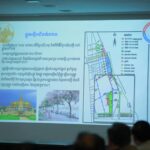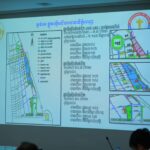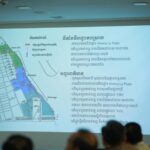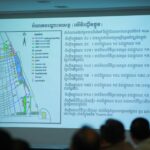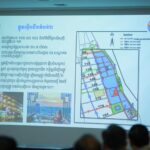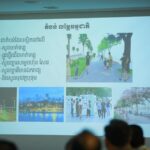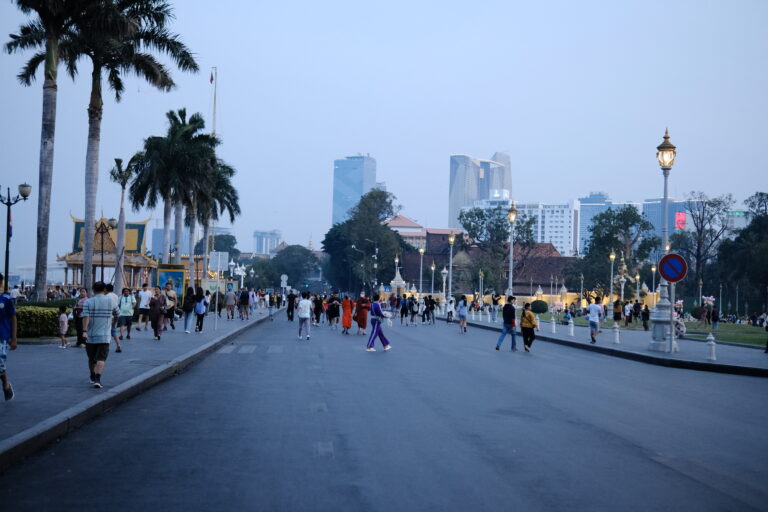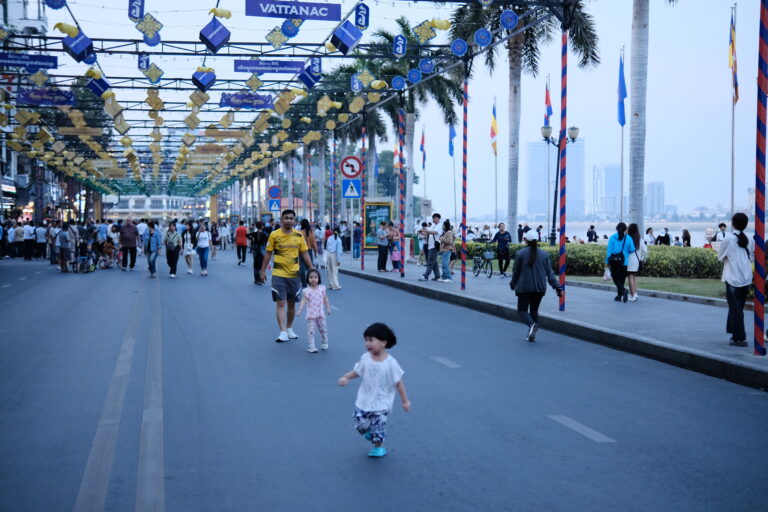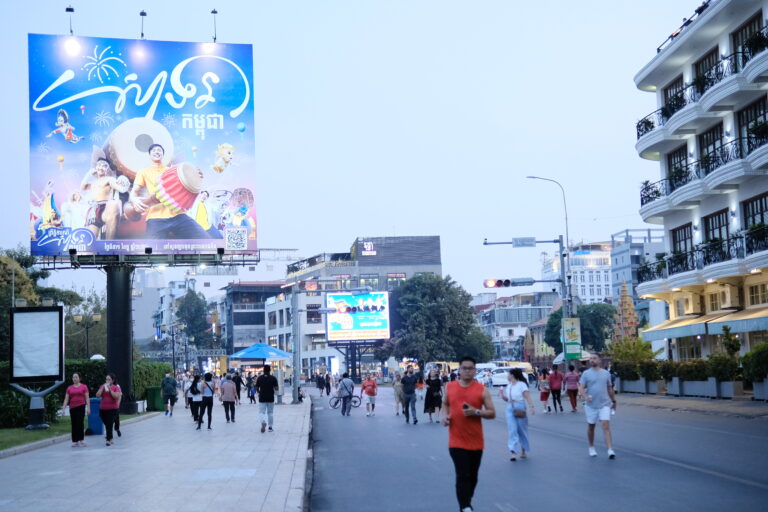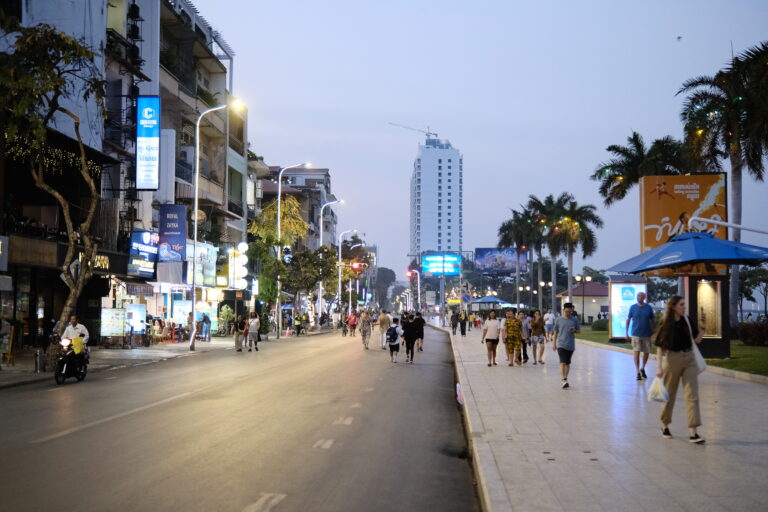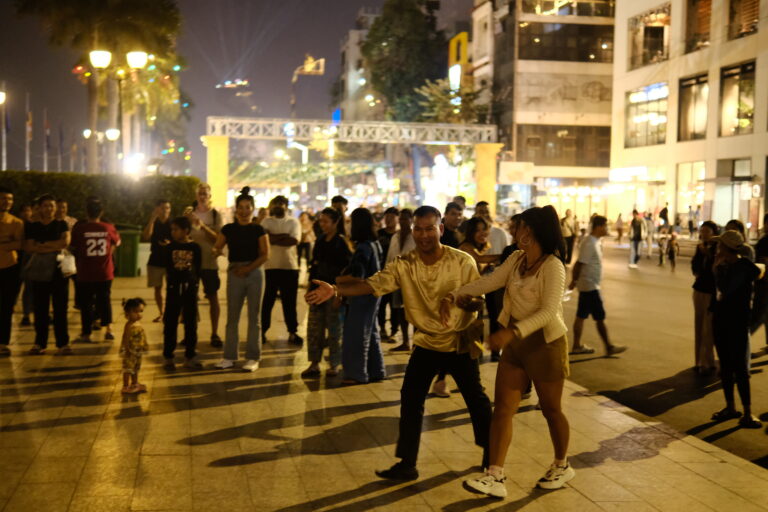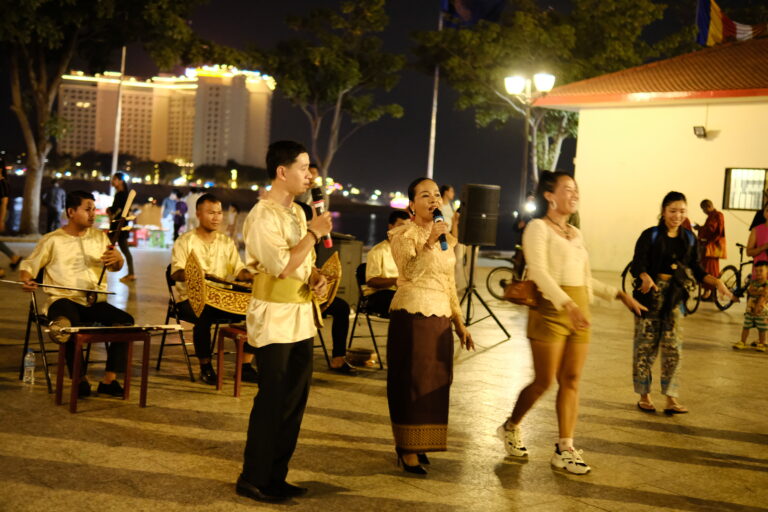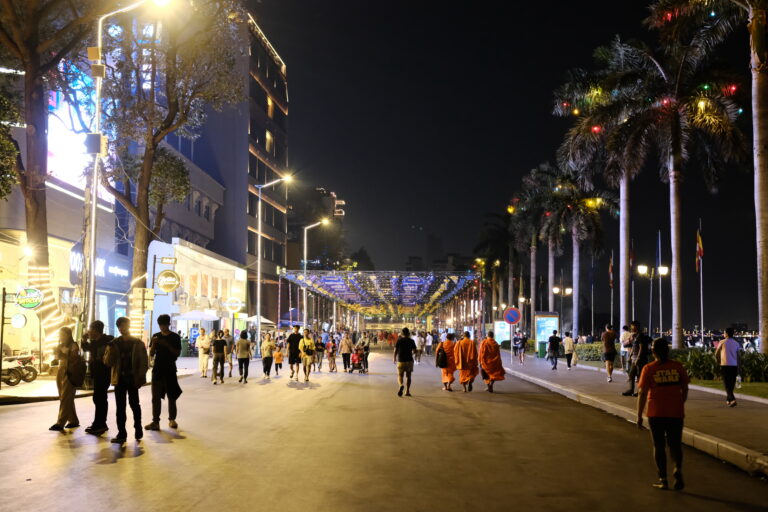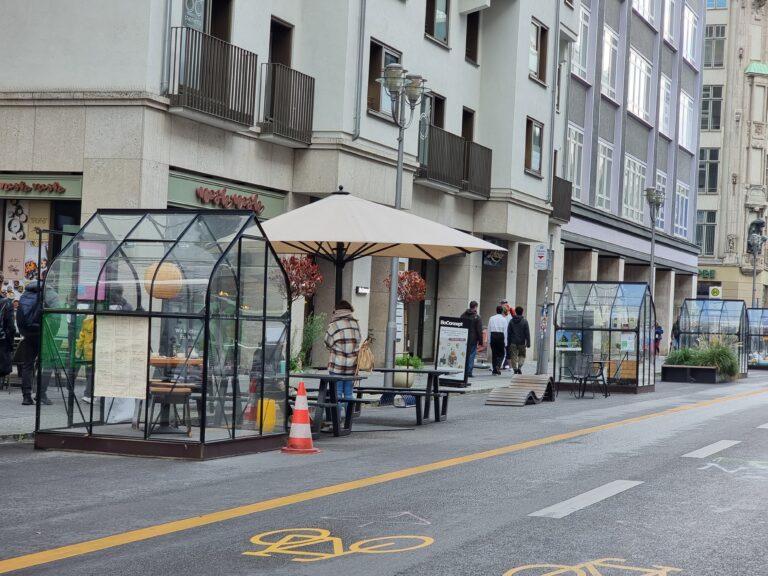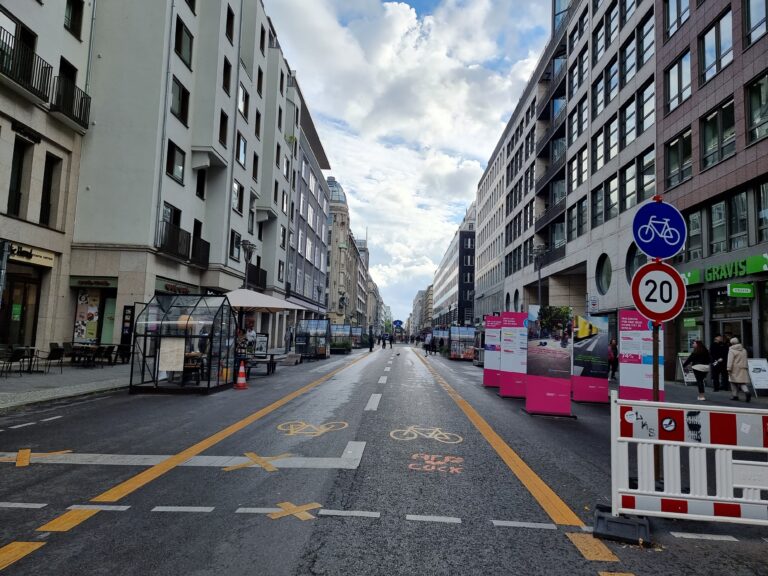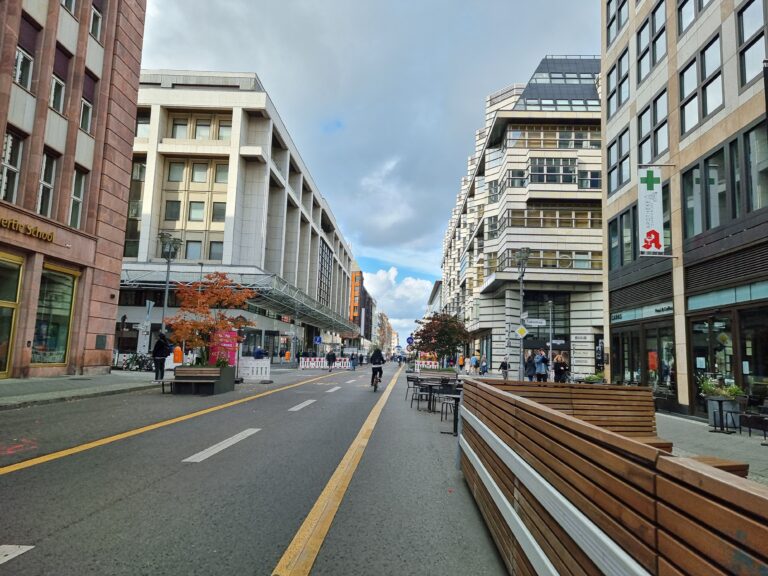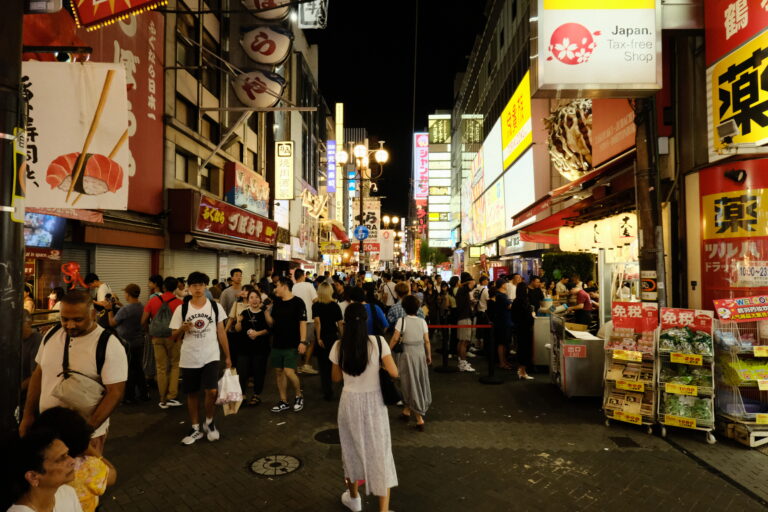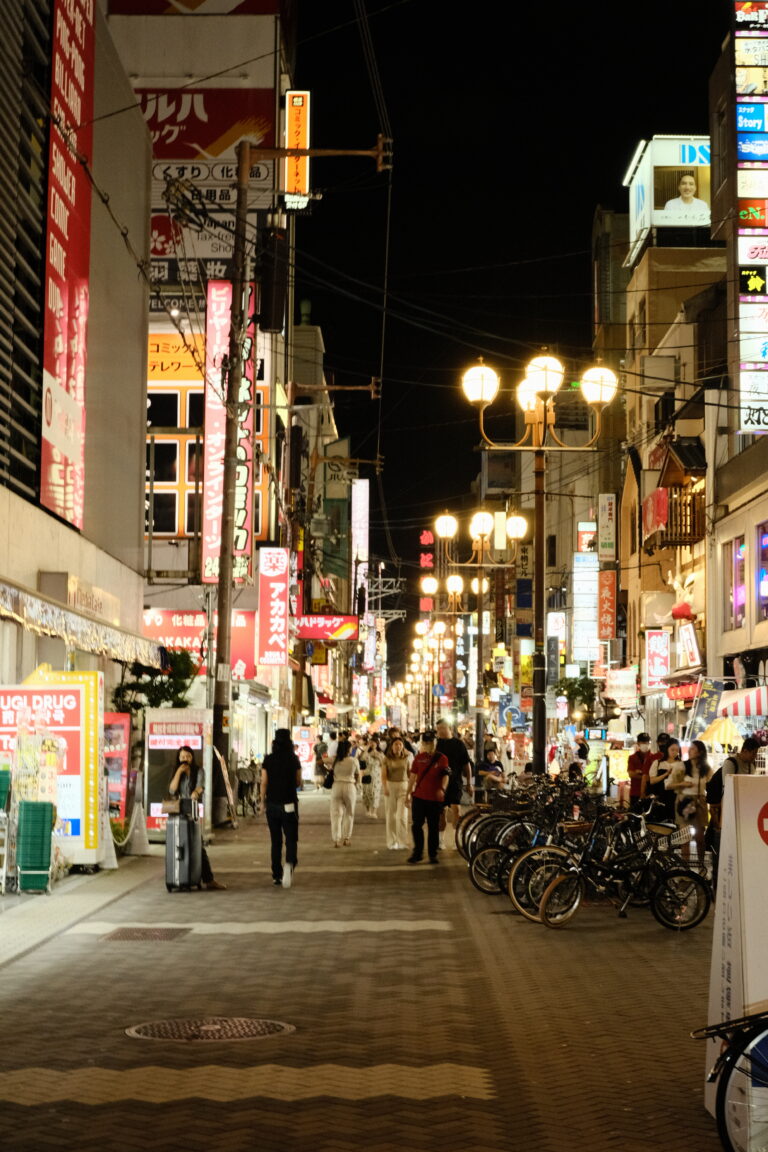‘While active street life generates neighbourliness, which is a critical form of social “wealth,” it is also quite literally good for business. Walkable, active streets generate their own public order, and their foot traffic fuels local shops. Walking is as much a factor in urban economics as it is in a city’s safety and quality of life.’ – Street Fight, Janette Sadik-Khan
Walking Street
Walking Streets or Pedestrianised Streets are typically most appropriate in corridors with commercial activity on both edges of the street. They are strategically selected streets in which pedestrian volume is high and vehicular traffic is restricted. These streets offer opportunities for diverse activities such as shopping or sitting, dinning or dawdling, promenading or performing. When placed, designed, and maintained well, pedestrian only streets become a destination and result in economic benefits for adjacent businesses. (Global Designing Cities Initiative, 2022)
Announcement
Late in 2024, Phnom Penh City Hall announced the “Walking Street” project. The planned pedestrianized street is set to open on Saturdays and Sundays from 6 PM to 11 PM. This project aims to boost tourism and provide a pedestrian-friendly environment. The project piloted on February 1, 2025.
Walking Street in Phnom Penh
Strolling through the first large-scale “Walking Street” in Phnom Penh, the first thing that struck me was the absence of vehicle noises. The whole area used to be congested with all sorts of motorized vehicles. For once, I could take a breather—this experience is comparable to the serene atmosphere of Kampot’s promenade area, a relaxing coastal town in southern Cambodia. Without the hustle and bustle of traffic, everyone was free to navigate the street at their own pace. I saw children and elderly people enjoying their time. Street performers added to the memorable moments for all visitors. Interestingly, Phnom Penh’s Walking Street restricts not only vehicular traffic but also bicycle traffic, except for children cycling.
We must address the elephants in the room. Yes, there are two: revenue and traffic. Pedestrianized streets, when implemented correctly, bring more revenue to local businesses. They attract more people to the area, thus more potential shoppers. On the other hand, there’s the concern that traffic spillover will cause more congestion in other areas. This is a valid concern; however, given the fact that people will adapt to the change, let’s assume that there is a major road renovation on your way to work. You and every other commuter will find an alternative route. Moreover, everyone will adapt to the congestion peak times and will leave their starting points accordingly. People are adaptable beings, and they will use their intelligence to plan their trips.
Walking Streets I Have Been To
Friedrichstraße, Berlin, Germany.
Walking along Friedrichstraße was one of my first experiences of a walking street in Europe. They had placed parklets, planters, dining tables, and added bidirectional bicycle lanes in the middle of the road. It was a pleasurable experience to walk along the strip, yet I did not feel fully relaxed because I was worried about stepping into the Fahrradweg (cycling lane).
As of 2025, Berlin authorities have overruled their decision and brought back vehicle traffic. Allocating much-needed space to dedicated cycling lanes was not favored by many, especially given the absence of incremental investment into the area. One Berliner told DW’s report that the space lacked great attention to detail—more trees should have been added, and the cycling path should be reconsidered elsewhere.
Dotonbori, Osaka, Japan.
Neon lights, creatively designed shop fronts, street food stalls, and seemingly countless entertainment options are the main attractions along the Dotonbori strip in Osaka, Japan. There is no shortage of activities. The street is bombarded with colorful graphics and various sizes of Japanese typefaces, all designed to grab every strain of your attention. However, these bombardments were somehow pleasant. I felt comfortable with the space without worrying about incoming cyclists. The space felt well-thought-out, and the local businesses were fully taking advantage of the pedestrianized street.
What Can Improve Phnom Penh’s Walking Street?
Participation
As of now, many of the restaurants have yet to adjust to the pedestrianized zone. To address this, Phnom Penh City Hall should engage and gather input from businesses within the pedestrianized zone to formulate strategies that enhance visitors’ experiences and encourage people to spend more time and money. The effectiveness of the project should be thoroughly monitored, with data sharing being as transparent as possible. Additionally, the participation rate from restaurant owners and residents should be more than 50%.
Entertainment
In my opinion, loud entertainment should be contained to just the shopping strip of the zone, keeping the riverside area laid-back with noise levels at a respectable volume. The city must assign an event planning committee to organize weekly events and announce them through various mediums, including handing out flyers.
Physical Infrastructure Investment
As part of the placemaking process, Phnom Penh City Hall should consider adding movable planters, umbrellas, chairs and tables, signage, illuminations, outdoor fans, and exhibitions. By incrementally investing in the space, this Walking Street can become the “Dotonbori” of Phnom Penh.
Park and Recreational Network
Phnom Penh’s Walking Street has the potential to integrate into the greater Royal Palace Park and recreational network. I hope to see this space closed to vehicular traffic indefinitely. By repaving the tarmac road with cobblestones or tiles and planting permanent trees, the city can convert this zone into a proper urban park that Phnom Penh truly needs.
References
Global Designing Cities Initiative. (2022, October 25). Pedestrian-Only Streets – Global Designing Cities Initiative. https://globaldesigningcities.org/publication/global-street-design-guide/streets/pedestrian-priority-spaces/pedestrian-only-streets/Phnom
Penh ‘Walking Street’ trial to launch on February 1st. (2025, January 30). Khmer Times. https://www.khmertimeskh.com/501631932/phnom-penh-walking-street-trial-to-launch-on-february-1st/
Phnom Penh Riverside Walking Street to be launched in January 2025. (2024, December 26). Khmer Times. https://www.khmertimeskh.com/501614540/phnom-penh-riverside-walking-street-to-be-launched-in-january-2025/
Restle, B. (2022, November 21). Berlin reopens Friedrichstrasse boulevard to cars. dw.com. https://www.dw.com/en/berlin-reopens-friedrichstrasse-boulevard-to-cars/a-63812425
